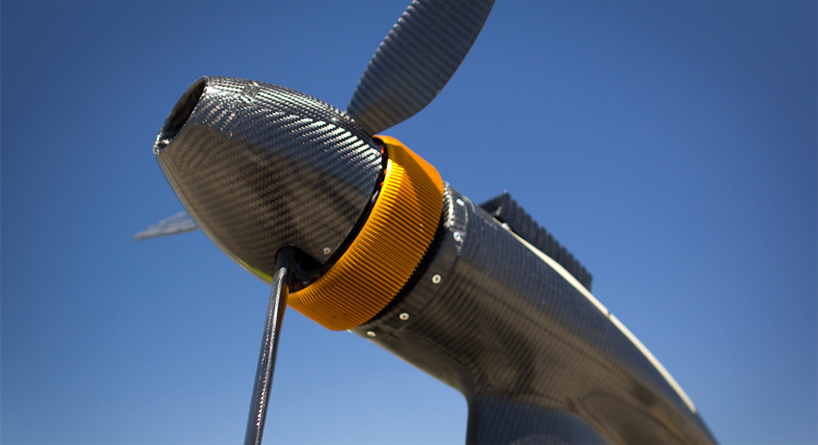Carbon fibre: the next environmental crisis?
This strong and lightweight material is being used by many industries – but recycling it remains a challenge.
Carbon Fibre (CF) has been used in various industries for many years now. There’s no question why it has become so popular: its composite results in a very strong, ultra-light material that is heavily used in many industries (e.g., wind power, aeronautics, automotive, and sporting goods). Its characteristics are highly valued by any industry looking for a light and durable material.
CF has allowed for numerous advancements in key performance sectors, pushing industries to their highest possible standard. The material is ideal within many applications; unfortunately, it also comes with an environmental cost. As of today, it is very difficult to recycle CF, resulting in most of the material being thrown out in landfills.
Carbon fibre is a complex material, yet simple to produce. The downside of using this material is that it relies heavily on chemicals, resins and composite, making the mix difficult to recycle. Therefore, building a closed loop system that utilizes recycled carbon fibre by-products within new products has become a challenge, especially without a scalable recycling solution.
As carbon fibre becomes cheaper, its popularity also increases. It generated sales of $75B worldwide in 2015. It is currently very complicated to recycle or reuse carbon as it is designed for extreme durability and for a very specific purpose within a defined application. As more industries are refocusing their supply chains and manufacturing processes on the 4 Rs of sustainability (Repurpose, Reuse, Recycle, Reimagine), a system needs to be developed to recycle and/or reuse CF as a raw material within other applications to avoid landfills.
An extensive report by the University of Tennessee indicates that the carbon fibre market has grown rapidly in the past few years. The primary sectors using carbon fibre are: wind power, aerospace, automotive and sporting goods. The industry is clearly projected to demand more of this material due to its capabilities and characteristics. As the demand grows, alternatives for reusing and recycling the material must be developed to prevent another uncontrolled industrial waste stream, such as plastic.
Achieving supply chain waste reduction requires an effective solution, as CF usage increases. Not only is it expensive for companies to dispose of the material, but it also poses an environmental threat if an excess of the produced carbon fibre composite ends up in landfills. This material is built to last, and while this is one of its key properties, it results in an indestructible material that, similar to plastic, threatens the health of our oceans.
Many recycling initiatives have been put in place with the vision of reusing virgin CF. In the aviation industry, Boeing has already launched initiatives to recycle carbon fibre from decommissioned aircrafts to make non-structural parts in new airplanes (such as trays, seats, doors, etc.). The leftover CF can also be used to strengthen cement and/or asphalt used for buildings and highways, giving them extended longevity as well as purifying water going into the ground.
The cycling industry is also facing the same recycling challenge. Several bicycle manufacturers are becoming burdened with warranties and retired carbon frames. Very few recycling options are available to the cycling industry and nothing has been formalized across the industry. This has created a situation where companies either continue to search for a solution or simply opt to pay landfill fees. Thus, an accessible and smart recycling program for carbon fibre remains a challenge for industries and businesses alike. Since there is no carbon fibre recycling centre in Canada (that we could find), we have to redirect our efforts toward the U.S. If the project turns out to be successful, the CF will be shipped down to the U.S. where the fibre is going to be separated from the resin, then crushed. This process will produce recycled fibre ready to be reused or mixed with cement and asphalt. We understand that the chain still isn’t perfect, but this is a step in the right direction toward a brighter future.
To avoid an environmental disaster, companies would have to move toward a backcasting approach. With the exception of a few companies, manufacturers today are using materials for the “usage” phase of a product, which is only one phase out of four. Implementing a backcasting approach would force companies to treat the material as one that can be reused for other products during its lifetime, avoiding a linear economy, and moving toward a circular economy model.
As CF usage is rapidly increasing within many industries, creating a provincial or federal program will be vital to recycling the material nationwide, while cutting operations and logistics costs. In this scenario, even though there are different types and qualities of CF, we could easily take old aircraft and wind turbine structures to build other products requiring CF in many industries, such as automotive, high pressure tanks, sporting goods and so on. That said, it is always beneficial to recycle; however, we need to focus our efforts on the quantity of virgin (new) CF that is being produced. If we don’t cap production, we will keep pumping more and more CF into our environment and it will take centuries before it disintegrates.

We are confident that technology will continue to evolve and CF recycling solutions will be developed. For that to happen, companies will need to take responsibility for the entire life cycle of their products, ensuring that end users have access to a solution to properly dispose of the material. It is now time that we learn from past mistakes and from the environmental consequences that plastic has created. It is said that by 2020, we’ll find more plastic in the ocean than fish. To avoid this situation with CF, everything starts with companies and social education.
About the author
Following graduation of International Business at the Univeristy of Ottawa and Sustainable Business Leadership from the British Columbia Institute of Technology, Maxime Charron has founded LeadingAhead with the objective of creating a sustainable economy system while improving social and environmental corporate performance.
Infolettre
Envoyée tous les jeudis.
Inscrivez-vous.
Suivez l’actualité de l’économie positive et engagée.
Emplois
Trouvez l'emploi idéal.
Événements
Nos prochaines activités.


